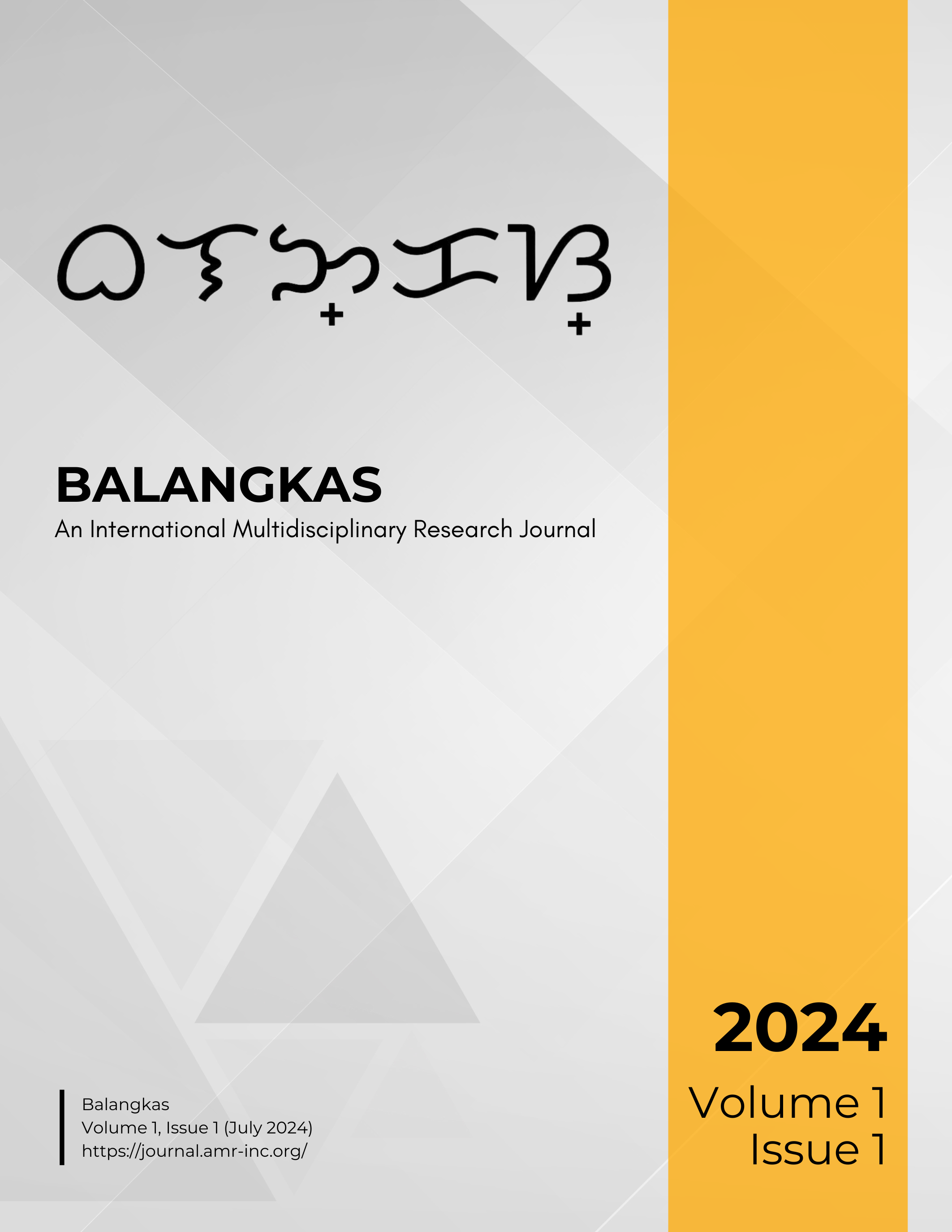Natural Language Processing of Gemini Artificial Intelligence Powered Chatbot
Keywords:
natural language processing, artificial intelligence, GeminiAbstract
Natural Language Processing (NLP) created Gemini AI-powered chatbot, a powerful tool that assists humans in many sectors. This article explains the Natural Language Processing in Gemini from various theories from books and papers along with usage examples from different education sectors. This article will analyze 20 kinds of literature on the topic categorized in NLP, AI, and Gemini AI-powered chatbot. NLP lets AI communicate naturally and as humanely as possible when interacting. The findings of this article is 1) Primary NLP functionalities to help Gemini address a variety of client needs and ensure that it can comprehend them or make quick responses in different communication environments, methods such as machine translation and text summarization are employed; 2) Human-computer interaction (HCI): The review’s goal was to determine how Gemini can have user-friendly and natural conversations through HCI principles. This includes knowing what the user wants to do, giving suitable replies, and making the interaction seem effortless; 3) Methods for managing conversations AI integrated application has a big difference in core processing with the normal software, Gemini uses an algorithm as the main power to calculate the possible response for the users and give the most suitable response regarding the request or question. Gemini uses machine learning with the information provided related to human needs, leading to more users using many discourses of human-bot. This advancement often raises a question about how Gemini works and processes data and has proven very useful for humans. Much research investigates the real usage of AI in real-life situations, however, a deeper understanding of the fundamentals of language processing by investigating further the topic of the possibilities of many Gemini usages will be unlocked.
Downloads
References
Anil, R., Borgeaud, S., Alayrac, J., Yu, J., Soricut, R., Schalkwyk, J., Dai, A. M., Hauth, A., Millican, K., Silver, D., Johnson, M., Antonoglou, I., Schrittwieser, J., Glaese, A., Chen, J., Pitler, E., Lillicrap, T., Lazaridou, A., . . . Vinyals, O. (2023). Gemini: a family of highly capable multimodal models. arXiv (Cornell University). https://doi.org/10.48550/arxiv.2312.11805
Bender, E. M., & Koller, A. (2020). Climbing towards NLU: On Meaning, Form, and Understanding in the Age of Data. Proceedings of the 58th Annual Meeting of the Association for Computational Linguistics, 5185–5198. https://doi.org/10.18653/v1/2020.acl-main.463
Coles, G. (2023, December 28). Google DeepMind Gemini AI release date. PC Guide. https://www.pcguide.com/apps/google-deepmind-gemini-release-date/Damerau, F. J., & Indurkhya, N. (Eds.). (2010). Handbook of Natural Language Processing (2nd ed.). CRC Press.
El-Sabagh, H. A. (2021). Adaptive e-learning environment based on learning styles and its impact on development students’ engagement. International Journal of Educational Technology in Higher Education, 18(1), 53. https://doi.org/10.1186/s41239-021-00289-4
Holmes, W., Bialik, M., & Fadel, C. (2019). Artificial Intelligence in Education Promises and Implications for Teaching and Learning. Center for Curriculum Redesign.
Imran, M., & Almusharraf, N. (2024). Google Gemini as a next generation AI educational tool: a review of emerging educational technology. Smart Learning Environments, 11(1), 22. https://doi.org/10.1186/s40561-024-00310-z
Jurafsky, D., & Martin, J. H. (2023). Speech and Language Processing: An Introduction to Natural Language Processing, Computational Linguistics, and Speech Recognition (3rd ed.).
Lee, G., Latif, E., Shi, L., & Zhai, X. (2024). Gemini Pro Defeated by GPT-4V: Evidence from Education. arXiv (Cornell University). https://doi.org/10.48550/arxiv.2401.08660
Lee, G., Shi, L., Latif, E., Gao, Y., Bewersdorff, A., Nyaaba, M., Guo, S., Wu, Z., Liu, Z., Wang, H., Mai, G., Liu, T., & Zhai, X. (2023). Multimodality of AI for Education: towards Artificial General Intelligence. arXiv (Cornell University). https://doi.org/10.48550/arxiv.2312.06037
Manning, C., Surdeanu, M., Bauer, J., Finkel, J., Bethard, S., & McClosky, D. (2014). The Stanford CoreNLP Natural Language Processing Toolkit. Proceedings of 52nd Annual Meeting of the Association for Computational Linguistics: System Demonstrations, 55–60. https://doi.org/10.3115/v1/P14-5010
Mishra, P., & Koehler, M. J. (2006). Technological Pedagogical Content Knowledge: A Framework for Teacher Knowledge. Teachers College Record Columbia University, 108(6), 1017–1054.
Mukhallafi, T. R. Al. (2020). Using Artificial Intelligence for Developing English Language Teaching/Learning: An Analytical Study from University Students’ Perspective. International Journal of English Linguistics, 10(6), 40. https://doi.org/10.5539/ijel.v10n6p40
Nyaaba, M. (2023). Comparing Human and AI’s (GPT-4 and Gemini) Understanding of the Nature of Science. SSRN Electronic Journal. https://doi.org/10.2139/ssrn.4661602
Paltridge, B. (2012). Discourse analysis. In Bloomsbury Publishing Plc eBooks. https://doi.org/10.5040/9781350934290
Perera, P., & Lankathilake, M. (2023). Preparing to Revolutionize Education with the Multi-Model GenAI Tool Google Gemini? A Journey towards Effective Policy Making. Journal of Advances in Education and Philosophy, 7(08), 246–253. https://doi.org/10.36348/jaep.2023.v07i08.001
Pikhart, M. (2020). The Use of Mobile Devices in International Management Communication: Current Situation and Future Trends of Managerial Communication. Procedia Computer Science, 171, 1736–1741. https://doi.org/10.1016/j.procs.2020.04.186
Pikhart, M. (2021). Human-computer interaction in foreign language learning applications: Applied linguistics viewpoint of mobile learning. Procedia Computer Science, 184, 92–98. https://doi.org/10.1016/j.procs.2021.03.123
Portakal, E. (2023, December 11). Google’s Gemini AI Review. https://textcortex.com/post/gemini-ai-review
Salim Keezhatta, M. (2019). Understanding EFL Linguistic Models through Relationship between Natural Language Processing and Artificial Intelligence Applications. Arab World English Journal, 10(4), 251–262. https://doi.org/10.24093/awej/vol10no4.19
Shneiderman, B., & Plaisant, C. (2005). Designing the User Interface (4th ed.). Pearson.
Vaswani, A., Shazeer, N., Parmar, N., Uszkoreit, J., Jones, L., Gomez, A. N., Kaiser, L., & Polosukhin, I. (2017). Attention is all you need. arXiv (Cornell University). https://doi.org/10.48550/arxiv.1706.03762
Woods, N., & Woods, N. (2014). Describing discourse. In Routledge eBooks. https://doi.org/10.4324/9780203784303
Downloads
Published
Issue
Section
License
Copyright (c) 2024 Balangkas: An International Multidisciplinary Research Journal

This work is licensed under a Creative Commons Attribution-NonCommercial 4.0 International License.






